GT Grade Project: Searching For A Gravel Bike – by Grannygear
Editor’s Note: In recent times we have noticed that there are more and more folks looking for a gravel bike. They are seeking advice and looking for tips on how to go about this. In the first post, Grannygear walks us through the process of how he and Mrs. Grannygear found a gravel bike that would work for Mrs. Grannygear’s needs. In this post we will also get a look at what upgrades they made to tailor the bike for her.
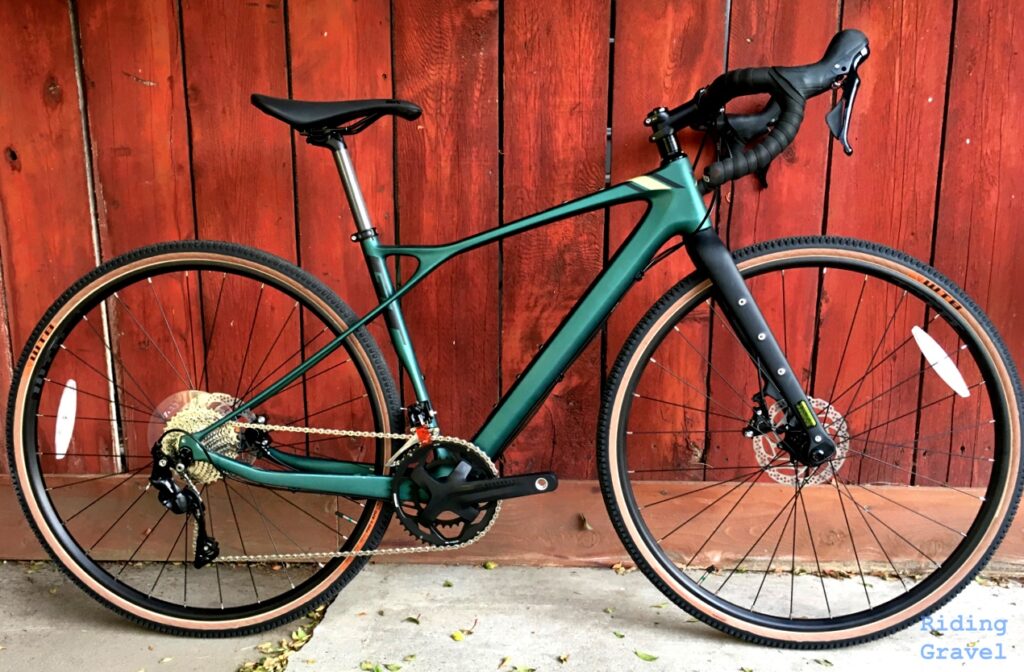
At $2500.00 retail and running a Shimano 105 drive train, you know that the GT Grade Carbon Expert will have some compromises in parts if we are counting grams. But it’s also a great level to start with as 105 is a very solid, reliable, and well performing group set. Of course, GRX is now what we will see on gravel bikes and that is a notch up, but 105 will work fine for our use.
Any upgrades will reflect either personal choice and fit, like a saddle or handlebar, or performance like wheels/tires, gearing, etc. Let’s begin.
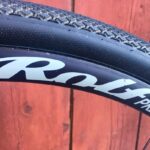
Wheels – I still think that the most bang for the buck is gained in a wheel upgrade. I weighed the stock wheels that came on the aluminum Topstone we have at around 2200g. I bet the Grade wheels are about the same. I had purchased the Rolf/Prima Hyalite wheels after we tested them a while back, thinking I would keep them for her next bike. At well under 1600g, the Hyalites spin up fast and roll like a ghost. They are wide enough to run 40’s and yet will be fast on the road too. They make a great choice as a high end aluminum gravel bike wheel, especially under a light rider. I think alloy wheels on gravel bikes make sense as many carbon wheels are stiff beasts.
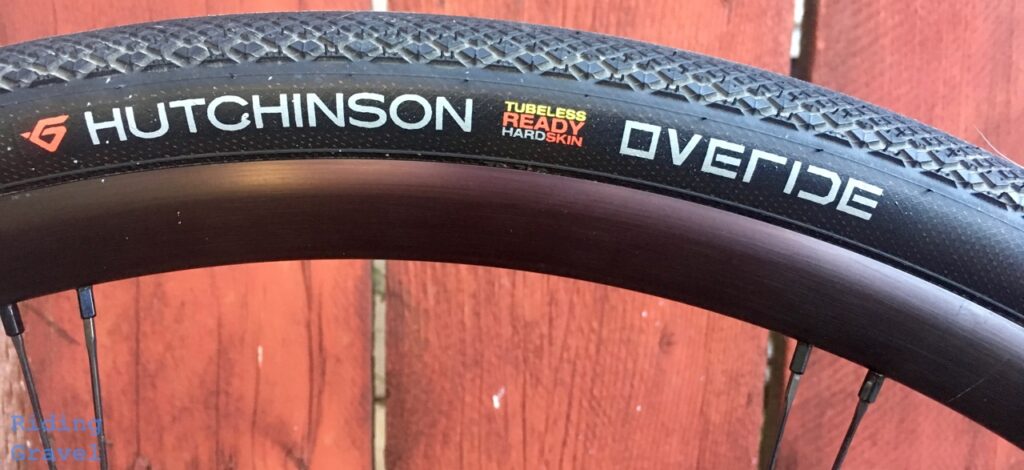
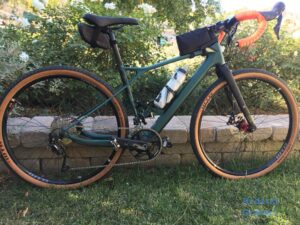
Tires – I expect the Grade will wear tires that fit the ride, so that will change depending on the day. The stock 37mm WTB Riddlers are good tires, but I wanted to tip the scales a bit more toward a faster rolling tire on pavement as that meets our needs best. For the first few trips we were sorting out the bike and were mostly on pavement, even if it was bad pavement. For that, we used the Hutchinson Overides in a 35mm size. They are fast rolling on the street and can handle mild dirt roads and hero gravel. But for real dirt I wanted a bigger tire that was still fast-ish on the road and would give Mrs. Grannygear a confident feeling off road.
There are a lot of great tires out there now, but I had that set of IRC Bokens in the 40mm size left over from the review. I was very impressed with that tire and the way it hung on to dirt better than one would think by looking at the minimal tread. It also plumped up to 42mms wide on the Hyalites. That is a nice size for flotation in our area of looser soils. There was about 6mms of room at the chain stays with the 40mm Bokens.
We also test fit a set of 650b wheels with WTB Byway 47mm tires on it. It gave her a chance to try that wheel/tire size, however she seemed to prefer the IRC Bokens with the 700c wheel combo. I think the Grade looked really sharp with those WTB 47’s in the skin wall color.
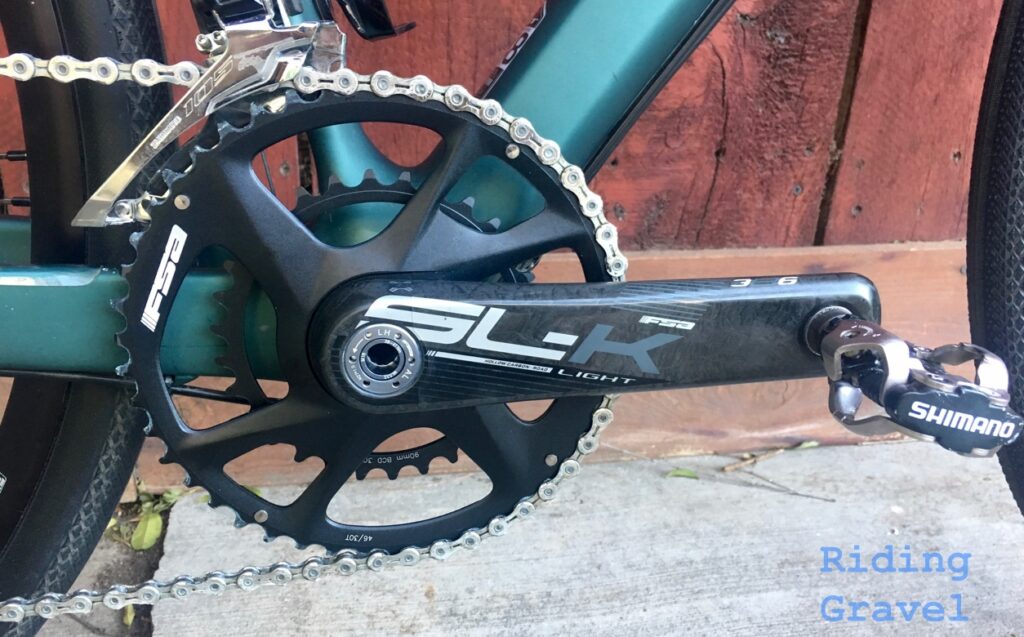
Drivetrain – Honestly that all could have just stayed as is. The 46/30 FSA crank and the 11-34 cassette is all the gearing that we really need to get by. On the Cannondale Slate I had been running a 46/36 crank and a SRAM 11-36 cassette, so that gave us a 1:1 low gear and plenty of high end. So the 30 tooth small ring and 34 tooth top cog on the GT Grade should be deeper than that by, well, shall we say, ‘one gear’? However we have to consider that the wheel size of the Slate makes that 36/36 combo lower in gear inches than you would expect. So when we go to a bigger diameter 700c wheel and tire, we effectively end up with a taller gear in any combo as compared to the Slate.
Looking at that then, I will be likely end up running an 11-36 SRAM 11spd cassette. That will even out the difference in wheel size and give us a full gear lower than the Slate, taking into consideration the wheel size. I have not swapped that in yet, but I did test fit that cassette into the Topstone (same 105 setup) and it shifted it perfectly with no mods or adjustments.
Mrs. Grannygear runs a 165mm length crank arm on the road/gravel, and that is basically never spec’d on a stock bike in a 51/52cm size. But apparently that 48cm size called out for a stock 165mm crank as that was what the Grade came with. I was thinking I would like to reduce some weight by swapping to a lighter crank, but 165mm is not available in most of the new choices on the market (like GRX or Easton), and while I have a 165 Praxis crank in that length, they do not offer a 46/30 combo. Yet. I wanted to be able to run that 46/30 chain ring set. FSA to the rescue! FSA was nice enough to send over a very light carbon crankset in a 165mm crank. The carbon crank was 602g and the stock one was 883g, both in a 46/30 combo. That shaved 281 grams off the bike’s weight. It’s good looking too! Shifting on the FSA is very good, not Shimano good, but what is? I doubt anyone will complain as a 281g savings is a bunch of grams.
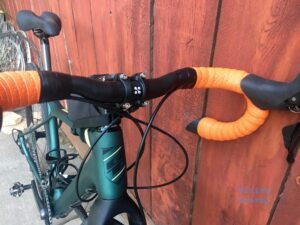
Contact Points – The low-ish stack height of the Grade required me to get the bar height up a bit more than spacers would allow for. She likes to have a bar height about even with her saddle top. To help with that I picked up a Specialized drop bar with 15mm of rise to it. But I also had some concerns about the long reach. I really should be using an 80mm stem, but a 90mm is a short as I can use (see below as to why). In order to get that all OK, I made sure the bar had as little reach as possible. At 70mms of reach, the Specialized Hover Alloy bar with flare will keep things from getting way out there. It is only $55.00 and is still a bit lighter than the stock bar. If I had seen the Ritchey WCS Ergo Max bar before I bought this, I would have chosen it instead as it has nicer shaping, in my opinion. I might swap later on. She favors Fizik bar tape, so that was wrapped over the bar.
The stock carbon seat post on the Grade really has some nice give to it so that stayed put but I did flip the saddle clamp to a more forward position. We also swapped to a Specialized saddle that works for her. I think I might need to go to a non-offset post though, just to get her more forward.
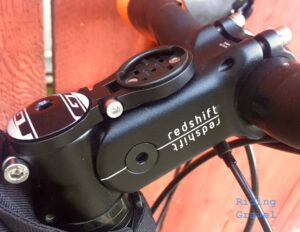
Redshift Stem – From the very beginning I was planning on running a Redshift Shock Stop stem on the Grade as I have been so happy with the one on the Lynskey. That stem will keep her from missing the suspension fork she enjoyed on the Slate. The only catch is that the stem’s internal design keeps the minimum length to 90mms, so that is 10mms longer than optimum for bike fit. That 70mm reach bar helped in getting the cockpit back where it needed to be, but if I could I would bring it back even more. The Shock Stop stem adds some weight over the stock stem but it’s worth every gram. I can’t imagine riding a gravel bike in So Cal without one of these on there.

The end result is a bike weight without pedals of 19.6 pounds. Not bad at all.
On the road the Grade pedals well enough to keep the road group in sight when on those Hutchinson 35’s, although she certainly notices the extra effort over her Emonda SLR as you would expect. Still, it’s hardly a slow bike. We had a weekend of gravel riding planned in the Western Sierras so that would be the first real test of our experiment.

Wearing the Boken 40’s, we lined up for the 35 mile version of the Everybody Loves Raymond gravel ride hosted by the Fresno Cycling Club. Not only was it a great event (we will be back next time for the 60 mile version) but it showed how good an all-rounder of a combo we had built. The route was a 50/50 mix of rough pavement over back country roads and smooth dirt punctuated by stutter bumps. She was very happy with the day and the bike performed perfectly.
The next day we did an all dirt route on some upper elevation jeep roads with silt, rocks, and roots. I was watching how the bike performed and was likely annoying the wife with questions like “how did that feel on the descent”, etc. I would have noticed if the bike was sketchy or was giving her reason to feel iffy but all I saw was confident riding. It really did work well, and both of us are very pleased with the end result. The stem and compliant frame did a great job of cutting down the bumps and Mrs. Grannygear loved the way the IRC Bokens rolled (nearly as fast as the smaller Hutchinsons) and found them to be a confident tire in the dirt.

We have a lot of gravel rides planned for next season and I think the GT Grade Carbon Expert is ready for whatever comes along. I love it when a plan comes together.











When I buy a new bike, I often put a good bit of thought and energy into making changes to a new bike to get it just right for my fit, personal preferences, and riding conditions. On my last bike, I changed the tires, stem, seatpost, and chainring before the bike even left the store. Of course, I then made multiple fit adjustments like pushing the saddle foward and raising the stem. Dialing a bike in is almost as important as deciding what bike to buy. In a way, it’s like building a custom bike without buying a custom bike.
I don’t think inexperienced riders realize just how much these changes improve the riding experience. A new bike in the stock form is seldom ideal for most riders. Buying a new bike has two parts. The first is choosing what bike to buy and the second is customizing the new bike to fit your specific needs. You should do more articles on this subject.
I also like that you essentially built a very short-travel full-sus Gravelbike. Call it compliance if you want. I think that all gravel bikes benefit from a bit of suspension/compliance. Compliant seatstays, seatpost, stem, fork, or actual suspension all add up to a much more pleasant to ride Gravelbike.
The GRX FC-RX600 11-speed (46/30T) crankset does indeed come in a 165mm crankarm length, though it requires a GRX front derailleur (and of course is not as light as that carbon FSA).
@John…interesting…this is what I read when I was researching…”The 2×11-speed crank is available in a 46-30T chainring combination and 170, 172.5, and 175mm crank arm lengths.” I should have dug further as the 165mm length is called out in the specs on the same webpage from Shimano.
gg
Hi!
First of all, thank you for the very informative articles! A very valuable read for many.
I’m about the make the change from cx to gg and am currently evaluating the alternative bikes. Living in Finland many of the brands available in U.S. or UK are not available or reasonable to purchase so I’m mainly focusing on the mainstream brands.
Budget being around 2500€ both Cannondale Topstone and GT Grade are in the short list. From the Topstone I’m considering both alloy and carbon frames, though the proprietary solutions in the carbon frame are a bit turn off for me.
After riding both the alloy Topstone and carbon GT over a good amount of time, has either one became a clear favorite. If so, which one and why? With this budget, would you consider some other models instead?
I will be using the bike mostly for endurance type of riding and not so much for bike packing so I would like the bike to be relatively fast on and off road and comfortable over longer periods of time.
best regards,
Timo
nice post. I am looking for a gt grade and have some doubts with the size. How much does Mrs. Grannygear’ height? Saddle height in the photos? thanks!